Server Finally Upgraded
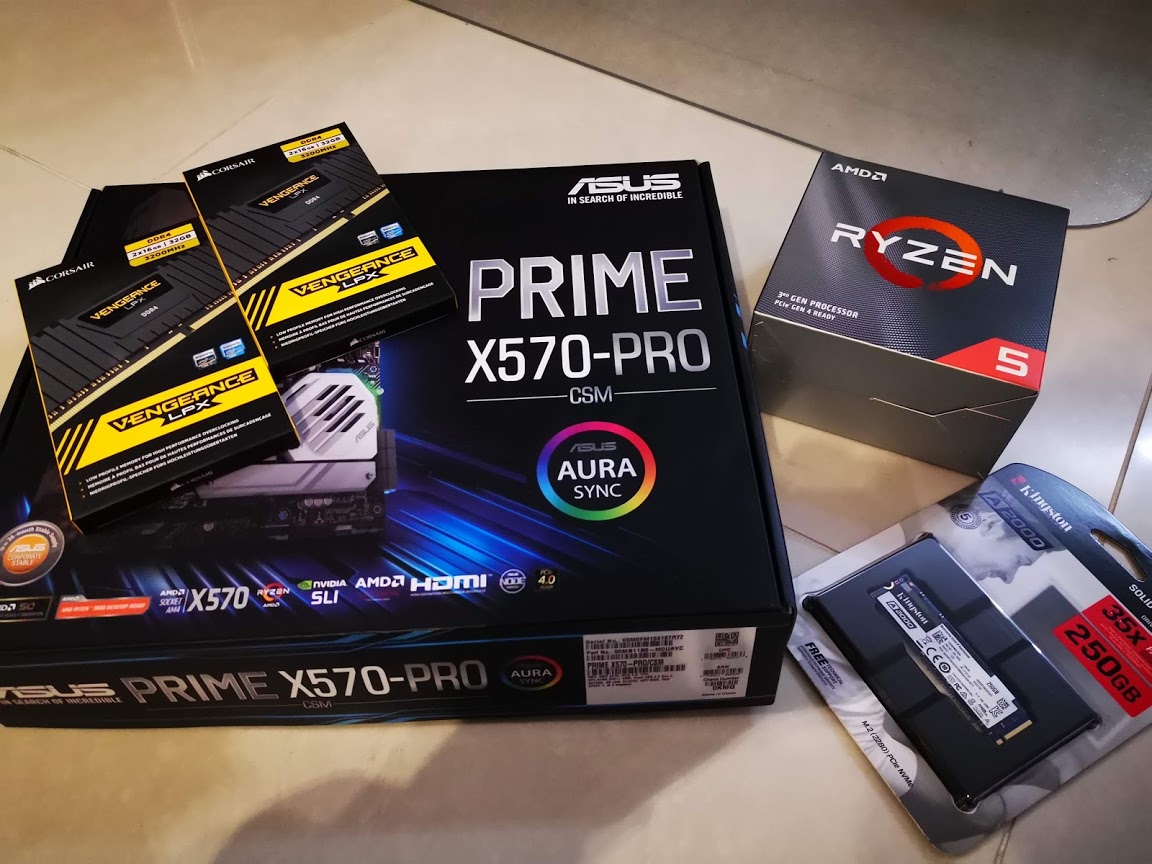
So I purchased a new AMD Ryzen 5 3600 system a month back. This is the 3rd generation CPU from AMD based on the Zen architecture. The following components form the foundation of the next development machine, replacing the old Xeon from circa 2017.
This is a modest system, all up costing about $1500:
- AMD Ryzen 5 3600 (65W TDP)
- Asus Prime X570-PRO
- 4x 16GB 3200 GHz DDR4
- 250GB NVMe
- Bronze 850W PSU
Here's a comparison of the old server vs new Server
| Description | Old Server | New Server |
|---|---|---|
| CPU | Intel Xeon E5-2407V2 | AMD Ryzen 5 3600 |
| Litography | 22 nm | 7 nm |
| CPU Release Date | 2014 | 2019 |
| Cores/Threads | 4C/8T | 6C/12T |
| Thermal | 80W TDP | 65W TDP |
| RAM | 32 GB DDR3 1600 ECC | 64 GB DDR4 3200 non-buffered |
| Network Speed | 4x 1Gbps to switch | 1x 10Gbps to switch 1x 10Gbps to NAS |
| Hypervisor | VMWare ESXi free | xcp-ng |
| Remote Console | Yes | No |
The only downside of the new server is the lack of a remote console (virtual KVM). It is something I have to live with for now. Luckily I have a old Silverstone case with a built in LCD monitor. It's not perfect, but it'll do for now.
Here is a picture of the new server (bottom) with the old server on top.
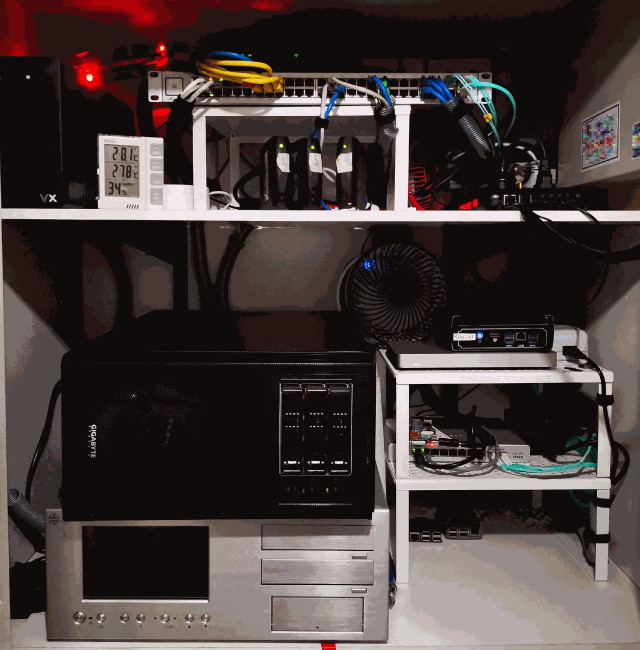
Took the opportunity to re-organize and tidy up all the cables. Not bad for 3 days worth of effort!
I just cannot sing enough praises on this new machine. It runs a lot cooler, and a lot quieter now.
The takeaway bits are the new server is more powerful, lower power consumption and has heaps more RAM. The switch I'm using has 2x SFP+ ports supporting 10 Gbps connectivity. So I purchased some 10 Gbps network cards and wire up the new setup in the following configuration:
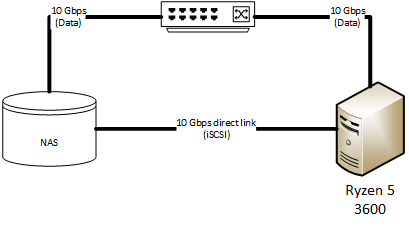
Basically the new Ryzen Server and the NAS now has a dedicated 10 Gbps link to the NAS, as well as another 10 Gbps link to everything else on the network. The direct link between the NAS and the Ryzen is used for iSCSI. The beauty of this setup is there are no longer any bottlenecks.
What is VMWare ESXi and XCP-ng? These are called hyper-visors, and in layman terms, it allows me to run multiple virtual computers inside just 1 computer. Every virtual computer is called a virtual machine (VM), and all Snakeoil development are done in VMs. The old computer with 32 GB of RAM allows me to run around 10 VMs. This new computer allows me to run that same VMs I had before, but run them with more grunt, and gives me enough headroom to expand.
If I run out of CPU grunt, the whole system can be scaled up by adding additional Ryzen machines to the pool. The virtual machines will spread the load between themselves. When that time comes I'll need to get an additional dedicated 10 Gbps switch so as there's no bottlenecks.
So what are the expansion plans in the pipeline?
First up will be the custom kernel builder I've taked about before in the pages. This is still a work in progress, but it'll eventually come into fruition. The website is here at https://custom.snakeoil-os.net. Currently a work in progress, when ready it'll be available to Snakeoil patrons and Paypal donors.
Second, it will be a development machine that cross compiles the binaries for the Raspberry Pi. As good as the Pi4 is, a proper CPU is just heaps quicker. Setting up a dedicated cross-compiler VM will speed up roll outs, and potentially allows you to have a custom Pi kernel via the site above.
Thirdly, a public code repository. To keep the Snakeoil kernel sources, to be used by the kernel builder site.
Lastly, a files download service. So that Snakeoil users can download their custom kernel and ISOs.
So, several exciting times to come, just need the time to implement 'em!


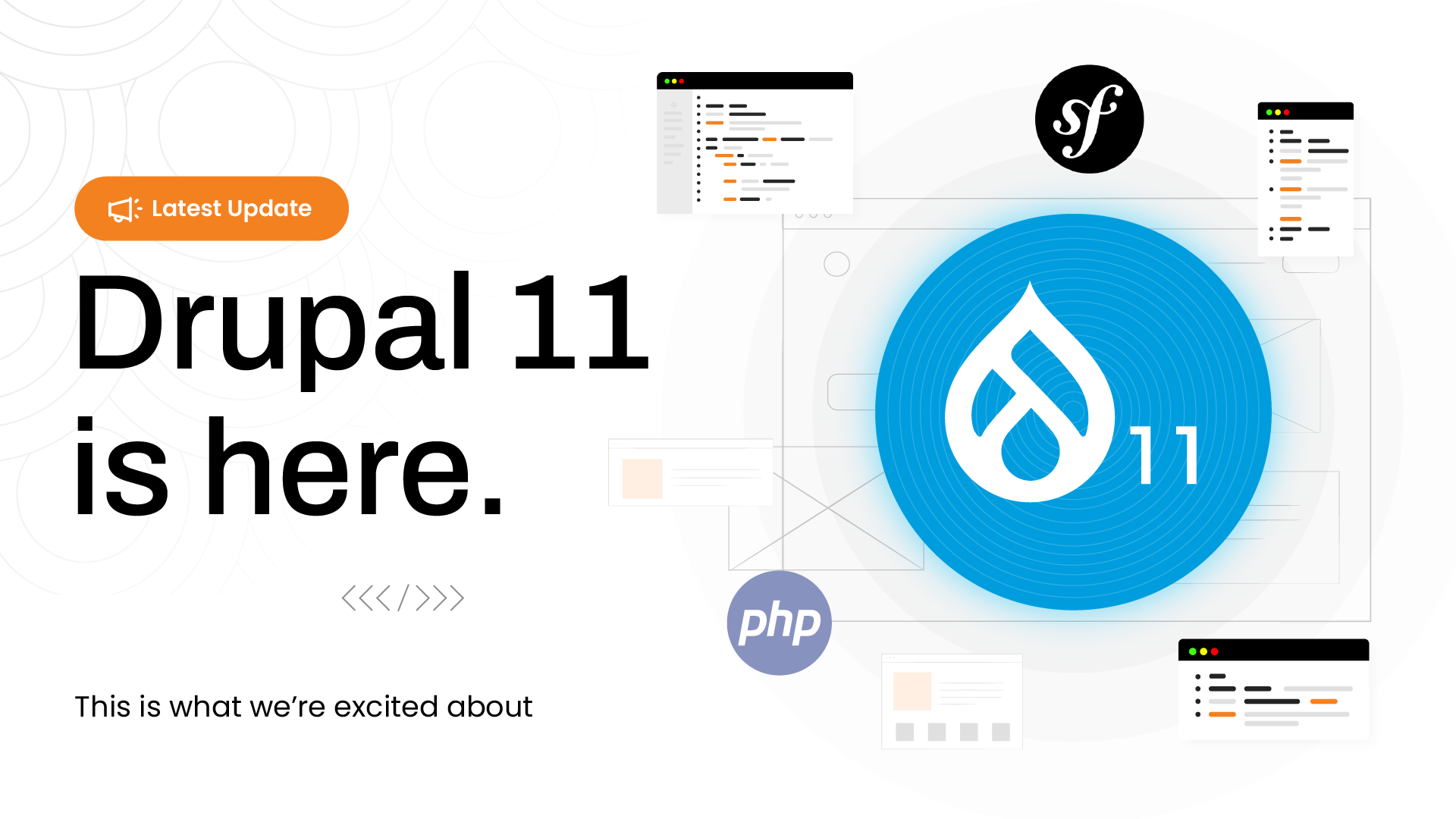
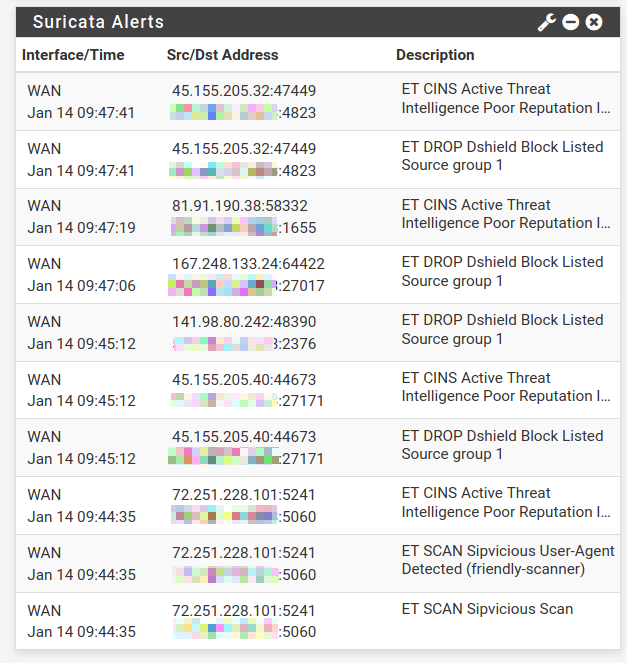

Add new comment